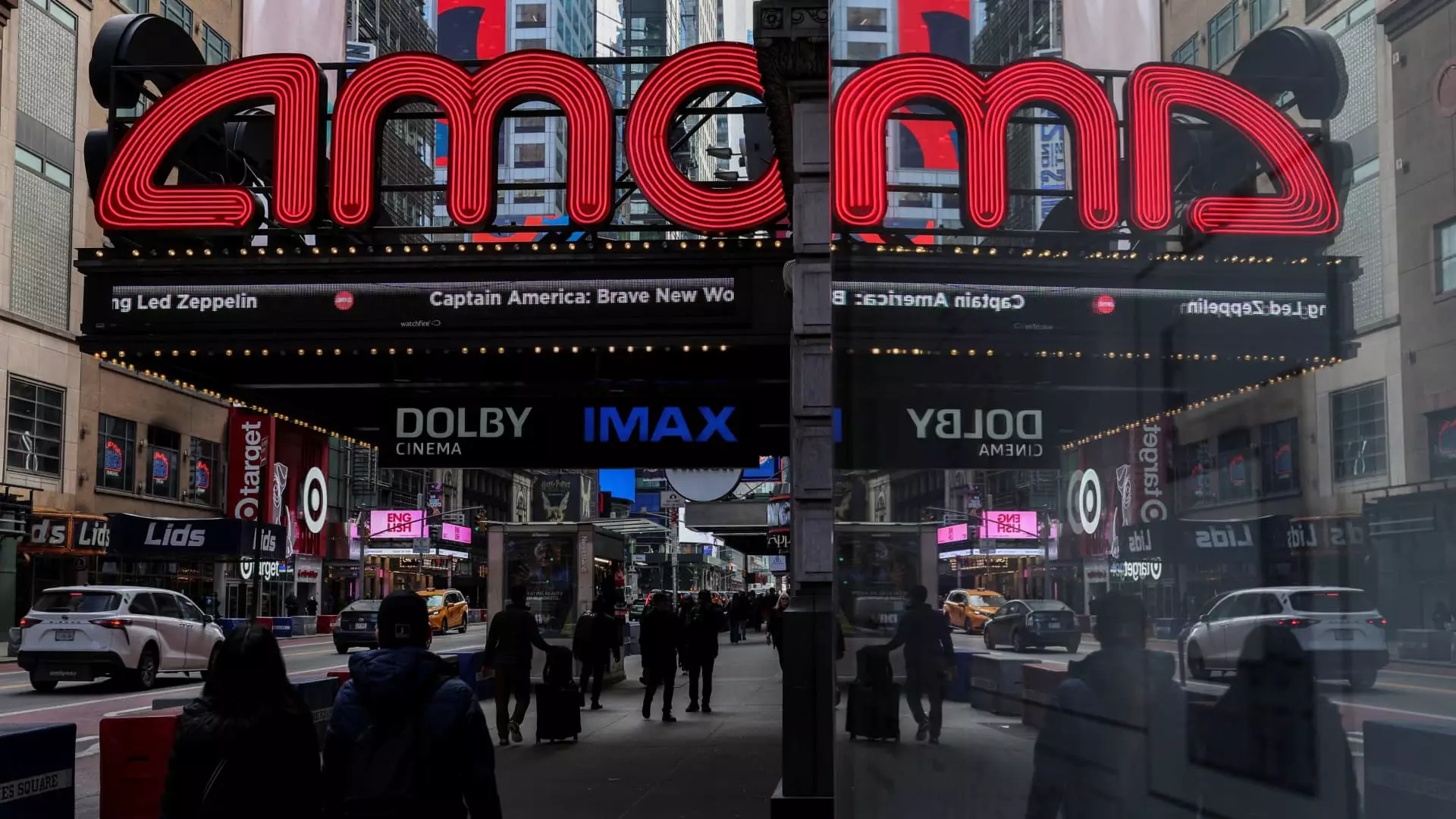In an age where streaming services seem to dominate our screens, Hollywood is not tapping out just yet. On the contrary, it appears that the blockbuster movie experience is undergoing a renaissance, thanks to theatre chains like AMC Entertainment. By strategically ramping up their premium screens, AMC is signaling a robust future for cinema. The company’s plan to introduce 40 additional Dolby Cinema theaters across the U.S. by the end of 2027 is not just a response to consumer demand; it reflects a fundamental shift in how films are consumed and appreciated. This bold move shines a light on something more vital: the unyielding desire for immersive storytelling that extends beyond our living rooms and into grand environments.
An Immersive Experience, Not Just a Movie
The remarkable aspect of AMC’s expansion is its focus on elevating the viewing experience, rather than merely filling seats. Premium Large Format (PLF) screens, like Dolby Cinemas, are not simply larger screens; they epitomize an investment in the cinematic experience. Take Dolby Cinema, for instance, renowned for its luxurious seating and cutting-edge technology that captivates the senses. Kevin Yeaman from Dolby Labs puts it aptly: “Premium moviegoing is defining the modern box office.” In an age where spectacle trumps subtlety, offering an unparalleled experience becomes imperative for filmmakers and viewer satisfaction alike.
What’s even more fascinating is the diversity in cinema options. AMC’s embrace of 4DX and Screen X offers audiences a cinematic experience that borders on physical immersion. With effects that simulate real-world sensations—like wind, fog, and even the movement of seats—viewers are no longer mere observers; they become active participants in the storytelling. The marriage of technology and artistry here is exhilarating. It’s as if cinema is evolving into a multi-sensory journey, where every heartbeat and heavy breath resonates throughout the auditorium.
Blockbuster Bonanza: A Perfect Match
Hollywood’s blockbuster lineup has proven to be a financial juggernaut, and it’s no accident that films like “Oppenheimer” and “Avatar: The Way of Water” found significant success in these advanced formats. These movies are designed for spectacle, and thus, it makes sense for audiences to seek out the most refined settings to experience them. Not surprisingly, some of the largest revenue-generating titles in recent history have benefitted immensely from the PLF craze.
Films are no longer just narratives; they are events, and PLF formats acknowledge this reality. However, therein lies the paradox. While PLF ticket sales are booming—doubling in just five years—the reality is that the core audience for traditional digital screens remains stronger than ever. There’s a delicate balance between preserving the sanctity of classic cinema and the need to evolve with the changing times. The rise of premium formats doesn’t replace traditional screenings but instead operates alongside them, allowing for a multi-faceted approach to film viewing.
The Economic Implications: Audience or Elitism?
One cannot ignore the economic implications of this transformation. While premium experiences fetch higher prices—averaging just under $17—it raises questions about accessibility. The uptick in ticket prices could alienate certain demographics, making film attendance a luxury rather than a shared experience. Yes, the allure of vividly immersive imagery coupled with innovative technology is tempting, but what does that mean for the ordinary moviegoer? The industry must tread carefully; striving for spectacle should not come at the cost of inclusivity.
Despite these concerns, the 33% growth in PLF receipts over five years is testimony to a fundamental truth: audiences crave elevated experiences. There’s a compelling case to be made for premium formats being a focal point of modern filmmaking. More attention to the cinematic experience might even drive a return to theatres, filling seats that often felt desolate during the streaming onslaught.
As we look toward 2025 and 2026—an era brimming with the promise of franchises from Marvel to Star Wars—the demand for premium moviegoing will likely continue to escalate. AMC’s strategic expansion is not just a gamble; it’s a calculated effort to redefine what cinema means in the digital age. Perhaps, just perhaps, the future of cinema lies in embracing this thrilling blend of technology and artistry, ensuring it remains relevant for generations to come.


Leave a Reply